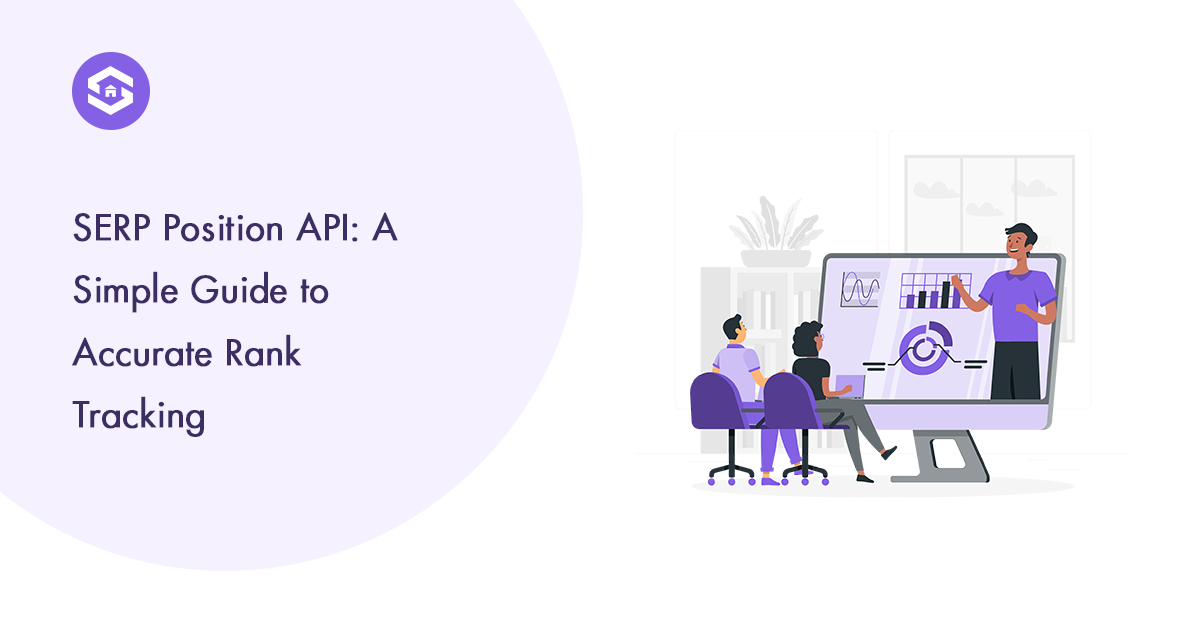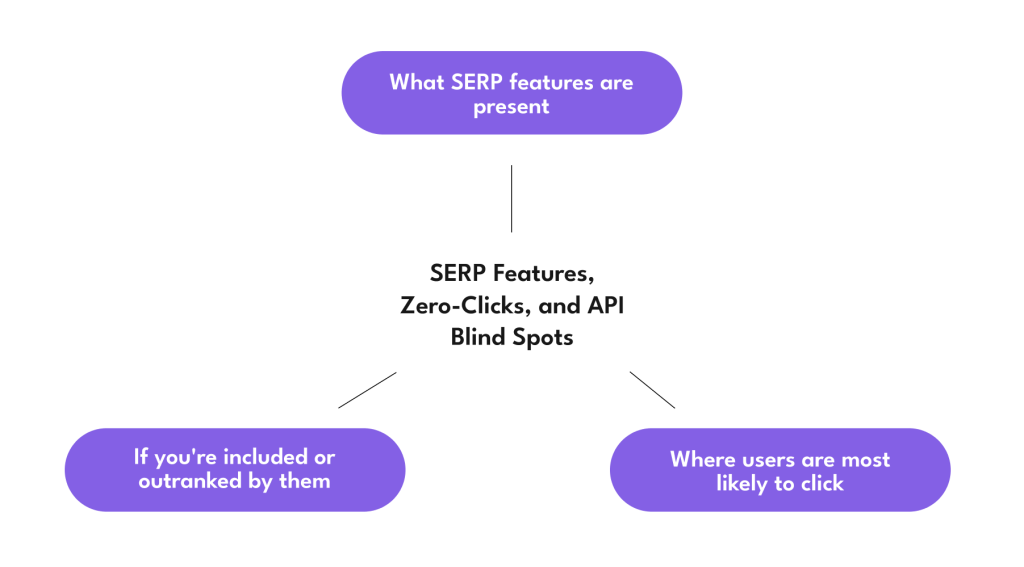
Search engines are not what they used to be—and they are not their results either. In today’s multimodal search ecosystem, where voice queries, visual research, AI-generated summaries and mobile indexing first dominate, depending only on the traditional SERP position data can feel outdated. That’s where a SERP position API becomes essential. Once, being in the #1 place in Google’s organic results was the gold standard. But now? That spot could be buried under a carousel, featured snippet, People Also Ask box, or even a generative AI response.
So the real question is—are SERP positions still reliable indicators of success?
For SEO professionals, developers, and data-driven marketers, the rise of rich snippets, zero-click searches and local map packages has complicated rank tracking. A keyword can be ranked #2 organically, but the potential of clicks drops significantly if a package of images or purchasing results appears above it. Add voice research results, mobile indexing and visual SERPs in the mix, and the reliability of gross position numbers begins to disappear.
This is why modern SERP APIs need to offer more than just rank. Understanding the intention of the search, contextual visibility and the presence of the SERP feature is now essential. This article explores whether position tracking still has weight—and understands this in an environment where users not only type queries, but speak, scan with cameras and interact with dynamic and AI-powered answers.
Why You Shouldn’t Just Track the #1 Spot Anymore
For years, the top spot on Google’s search results felt like the holy grail. Rank #1, and the traffic would follow. But in 2025, the digital landscape is more complex—and the #1 organic position no longer guarantees clicks, conversions, or even visibility.
Why? Because zero-click searches are rising fast. Users are increasingly getting answers directly from featured snippets, AI summaries, or knowledge panels, never needing to scroll down to the traditional links. So even if your site ranks #1, it could still be pushed down below multiple SERP features or a dynamic map pack—especially on mobile devices.
This is why experienced marketers are changing focus. It is not just where you rank – it is about how the content appears in the SERP and how well it matches the intent of the search. Tracking the depth of the pixel, the visibility above the fold and the competition for SERP elements now matters as much as its numerical position.
Here’s what you should start looking at instead:
- Are you featured in a snippet or sidebar?
- Do you appear in the image or video results for your query?
- How far do users need to scroll to see your link?
SERP tracking APIs today must provide data that reflects this shift—not just raw rankings, but context-aware metrics that reflect real visibility.
Because in the current SEO environment, #1 isn’t what it used to be—and success means being seen, not just ranked.
SERP Features, Zero-Clicks, and API Blind Spots

Search results are no longer blue links- they are a developed collage of SERP features, AI-generated answers and interactive elements. From image packs and top stories to people also ask boxes and knowledge panels, Google has turned its result page into a fully developed experience. But the challenge here is: Most standard SERP APIs still focus on the raw ranking and completely forget this scene and interactive layer.
This is where API blind spots become a problem. A page might technically rank in the top 3, but if it’s buried beneath a featured snippet, a YouTube carousel, or an AI-generated result, your organic link could be invisible to users. That’s the reality of zero-click searches, where users find what they need without clicking a single result.
Many developers and SEO teams rely on APIs that aren’t built to capture these nuances. They don’t highlight if a keyword triggers a rich snippet, or whether local pack results are pushing down your page. And that creates misleading insights. You’re tracking ranks, but not visibility.
To truly understand performance today, your SERP API must reveal:
- What SERP features are present
- If you’re included or outranked by them
- Where users are most likely to click
Without that data, you’re not tracking visibility—you’re tracking assumptions. And in today’s search landscape, that’s not enough.
Using SERP Position API to Predict CTR Decline
Position alone doesn’t tell the whole story anymore. Today, a #1 place might not deliver the traffic it once did—and that’s where SERP Position API step in with a new level of strategic value.
These APIs help developers and SEO teams go beyond static rank tracking. By examining historical SERP data, fluctuating ranking positions, and keyword behaviour across different devices, teams can identify subtle patterns that often lead to click-through rate (CTR) drops. For instance, if your page is slowly drifting from position 2 to 4 over several weeks, that early signal—detected via consistent API calls—can indicate upcoming user disengagement.
But it’s not just about movement. Some APIs also include search intent mapping and position volatility scores. These features help predict CTR decline by showing how stable your rankings are over time and whether a keyword’s landscape is shifting toward informational results or quick answers.
Here’s what makes a SERP Position API useful for CTR prediction:
- Real-time ranking shifts over short intervals
- Patterns of loss during algorithm updates
- Competitive ranking heatmaps that show rising threats
When used strategically, SERP Position API offer more than insights—they offer foresight. That means less reacting to traffic losses and more proactively adjusting your SEO game plan based on position dynamics.
How Search Personalization Impacts SERP Accuracy
If you’ve ever noticed different Google results on your phone compared to your laptop—or even compared with a colleague sitting next to you—that’s search personalization in action. It’s subtle, but it has a big impact on how we measure the accuracy of SERP positions.
Search engines now customize results based on location, search history, device type, and even user behaviour. So while your SERP Position API might show that your website ranks #3 for a specific keyword, the reality is more fragmented. For some users, it could appear at the top; for others, buried under local packs or shopping ads. This makes search engine results data feel less universal and more contextual than ever before.
The challenge? Personalization creates “noise” in rank tracking. Without filtering or segmenting this data, you’re working with averages—not true visibility. And when APIs don’t account for location clusters or logged-in user behaviour, ranking accuracy can be misleading.
Here’s where modern SERP APIs help:
- They support geo-specific queries to isolate location-based variances.
- Some offer device-based insights to compare mobile vs. desktop visibility.
- Others flag user-intent signals that influence ranking differences.
If your SEO strategy relies on “unified” ranking data, it’s time to rethink that. Personalization is baked into search—and that means accurate SEO tracking now depends on APIs that can mirror real-user experiences, not just pull raw positions.
Beyond Google: Expanding Rank Tracking to Other Engines
Let’s face it—Google isn’t the whole internet. While it dominates globally, users in specific regions and industries rely on platforms like Bing, Yahoo, DuckDuckGo, Yandex, or even Ecosia. If your rank tracking begins and ends with Google, you’re only seeing part of the picture.
So, why should you expand your SEO reach?
Because user behaviour is changing. Privacy-conscious users are shifting to non-Google search engines, while regional preferences remain strong in countries like Russia (Yandex) or Korea (Naver). If you’re only using a Google SERP API, you’re missing valuable performance signals.
How to make multi-engine tracking work:
- Choose an API that supports multi-engine coverage: The best rank tracking tools today provide search engine compatibility beyond just Google.
- Monitor keyword overlap: Keywords behave differently across platforms. A term that’s competitive on Google may be easy to rank on Bing.
- Adapt to algorithm nuances: Every engine has its own rules. Tailoring your content and structure to align with those nuances helps capture organic traffic from multiple sources.
By diversifying your search engine results monitoring, you unlock new growth zones. This doesn’t mean ditching Google—it means broadening your strategy to meet users where they are.
Because in 2025, real visibility isn’t just about who ranks on Google—it’s about who ranks everywhere.
Visual SERPs and Position Tracking—A New Era
We’re no longer in the age of simple ten-blue-link results. Search has become far more dynamic—and far more visual.
Modern SERPs are filled with image packs, video results, news carousels, shopping widgets, and AI-generated summaries. These visual SERPs are transforming how users interact with search, and that means traditional rank tracking methods are falling short.
The Shift in Search Behaviour
Ranking third on a search results page may not mean what it used to. If video blocks or product carousels appear above your link, your organic CTR could drop dramatically—even if your rank technically hasn’t changed.
That’s the catch: visual elements now dominate attention, and they often push organic listings further down. In this new landscape, visibility isn’t just about position—it’s about placement within SERP features.
How Position Tracking Must Evolve
To accurately measure performance, your tracking tools must go beyond keywords and URLs. Modern SERP position API should now be capable of:
- Identifying when a result appears in a rich media block (images, videos, etc.)
- Distinguishing between organic, paid, and AI-assisted placements
- Reporting the actual on-screen position and context of results
Automating Client SEO Reports Using Rank Data
Manually building SEO reports is time-consuming and prone to inconsistency. That’s why agencies now use automated SEO reporting powered by reliable rank tracking APIs. With direct access to real-time keyword position data, you can generate clean, visual, and personalized reports that reflect what truly matters to each client.
What’s the smart move?
- Connect SERP data directly to dashboards like Google Data Studio or Looker Studio
- Schedule daily or weekly pulls from your SEO rank tracking API
- Customize insights: by location, device, or SERP feature presence
- Automatically flag ranking drops or keyword milestones
- Share white-labeled reports without manual edits
The result? Transparent, consistent updates that clients actually understand—no fluff. With automated SEO tools, reporting becomes less of a chore and more of a growth engine. In 2025, smart agencies let the data speak for itself—on time, every time.
Closing Thoughts
Search is no longer just about who ranks #1—it’s about understanding why something ranks and how it appears across devices. With SERPs constantly evolving through mobile formats, zero-click results, and voice search, using a smart SERP tracking API is key to staying ahead. Whether you’re managing large-scale campaigns or fine-tuning keyword position tracking, precision matters more than ever. The future of SEO lies in automation, adaptability, and data accuracy. If you want to keep pace with algorithm changes and deliver reliable insights, now is the time to rethink how you track your search engine rankings.
